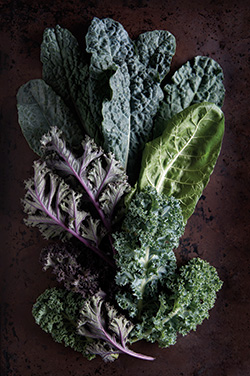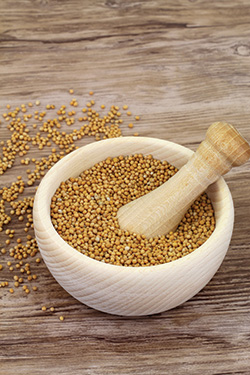Trend 7: No more mystery meat for seniors
 Aging baby boomers may be entering senior-living facilities, but they don't want the traditional grub served to their parents. When they enter retirement living — whether it's a private apartment, assisted living or a nursing home — they want gourmet choices. Facilities are hiring chefs to design menus that feature restaurant-quality fare. Smoothies continue to replace canned nutritional shakes. Some places even have cocktail hour. Food is becoming a competitive advantage for players in the continuing care market.
Aging baby boomers may be entering senior-living facilities, but they don't want the traditional grub served to their parents. When they enter retirement living — whether it's a private apartment, assisted living or a nursing home — they want gourmet choices. Facilities are hiring chefs to design menus that feature restaurant-quality fare. Smoothies continue to replace canned nutritional shakes. Some places even have cocktail hour. Food is becoming a competitive advantage for players in the continuing care market.
Operational Impact: This trend results in the emergence of creative chefs in the on-site healthcare segment. These chefs also require new equipment to execute restaurant-quality menus to satisfy the new demands of exacting boomers.
Trend 8: Local supersedes organic in diners' vocabularies.
 With large conglomerates now playing in the organic space, consumers are less trusting of products that are labeled "natural" or "organic." Now, the catchword is "local." The halo surrounding local products — handcrafted, produced by small farmers, healthy, free from chemicals — has become a symbol of trust and integrity. Local products are generally seasonal, which means they may not be available on a year-round basis. While meats and dairy products can be local, produce is by far the largest category. Often, restaurant operators will use the names of the farms in menu marketing.
With large conglomerates now playing in the organic space, consumers are less trusting of products that are labeled "natural" or "organic." Now, the catchword is "local." The halo surrounding local products — handcrafted, produced by small farmers, healthy, free from chemicals — has become a symbol of trust and integrity. Local products are generally seasonal, which means they may not be available on a year-round basis. While meats and dairy products can be local, produce is by far the largest category. Often, restaurant operators will use the names of the farms in menu marketing.
Operational Impact: Fresh produce has requirements for maintaining quality and food safety, including a receiving area, a washing station (which may mean extra sink space), and a dedicated prep area. Different produce items require different temperature storage, so it may be necessary to add cooler space. In some cases, to manage seasonal produce, restaurateurs flash freeze produce at the peak of harvest for use out of season.
Trend 9: Ultimate freshness cues: Condiments and specialties from scratch
 The chef at Copperwood Tavern in Arlington, Va., makes his own ketchup from smoked tomatoes. He, like many chefs and patrons, doesn't want the high-fructose corn syrup that comes in the processed version. He also makes peach and apricot ketchup. Known for its locally grown menu items, as well as grass-fed beef, the Tavern helps grow its reputation for freshness and wholesomeness with its handmade condiments.
The chef at Copperwood Tavern in Arlington, Va., makes his own ketchup from smoked tomatoes. He, like many chefs and patrons, doesn't want the high-fructose corn syrup that comes in the processed version. He also makes peach and apricot ketchup. Known for its locally grown menu items, as well as grass-fed beef, the Tavern helps grow its reputation for freshness and wholesomeness with its handmade condiments.
Other chefs make their own mustards, aioli and pickles, in addition to curing their own meat and breading their own chicken. This satisfies diners' demand for authenticity and gives each restaurant a good story to tell on its menu.
Operational Impact: Production of homemade condiments and specialty items may take place during off hours or may be done off-premise. This trend can have a positive impact on customer perception without necessarily changing the operation's workflow.



